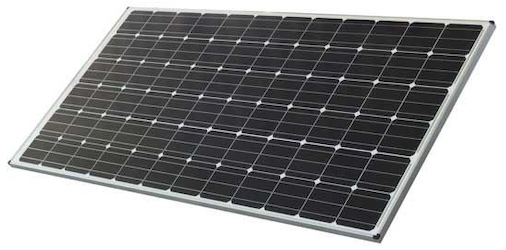back to panels
panel diodes
panel diodes:

When connecting multiple panels together, diodes are necessary to prevent reverse current flow through cells
or entire panels that aren't able to drive the flow of electrical current in the correct direction. Diodes
can be placed in two different positions to serve two different roles.
"Blocking" diodes are placed at the end of a panels or strings of panels, so that current flows through them
during normal solar collection. These diodes are connected together so that the panels/strings are joined in
parallel through their respective diodes. If enough cells in a panel/string are shaded, they will not be able
to produce enough voltage to prevent current from flowing from fully operational panels/strings that have been
connected in parallel back through the shaded array. This will create hot spots and can damage the panel.
Also if the panel is connected directly to a battery, the battery can discharge through the panel when shaded
or at night. Because these diodes are in series with the current source, they will waste energy relative to
their voltage drop while the panels are in use, which is why schottky diodes are often used.
"Bypass" diodes serve a somewhat similar purpose, and are installed in parallel with individual panels, but
are "wired backwards". Under normal conditions, the panel they are paralleled with will reverse-bias them,
and the diode will effectively be ignored. But in the event the panel is unable to develop current, (usually
due to one or more cells in the panel being shaded) the diode will be forward-biased by the other panels that
are in series with it, protecting the "dead" panel by routing most of the current around it and through the
diode. Schottky diodes are also useful here because their low forward voltage drop helps divert more of the
current around the dead panel. Unlike blocking diodes, bypass diodes do not consume power under normal
operating conditions. In theory, it's possible to place a bypass diode across every cell in a panel, but that
would increase the cost of the panel and probably make diode replacement difficult if needed. In practice,
panels usually have one bypass diode that will bypass the entire panel if needed. Otherwise, a single fully
shaded cell could turn the panel into an open circuit, blocking production from the additional panels that are
wired in series with it.
ideal diodes (in diodes)
rectifier diodes (in diodes)
schottky diodes (in diodes)
blocking vs bypass:

highest resolution images
last updated 05/14/2025 at 07:10:31 by make_www_index.command version 2025.05.13.A

